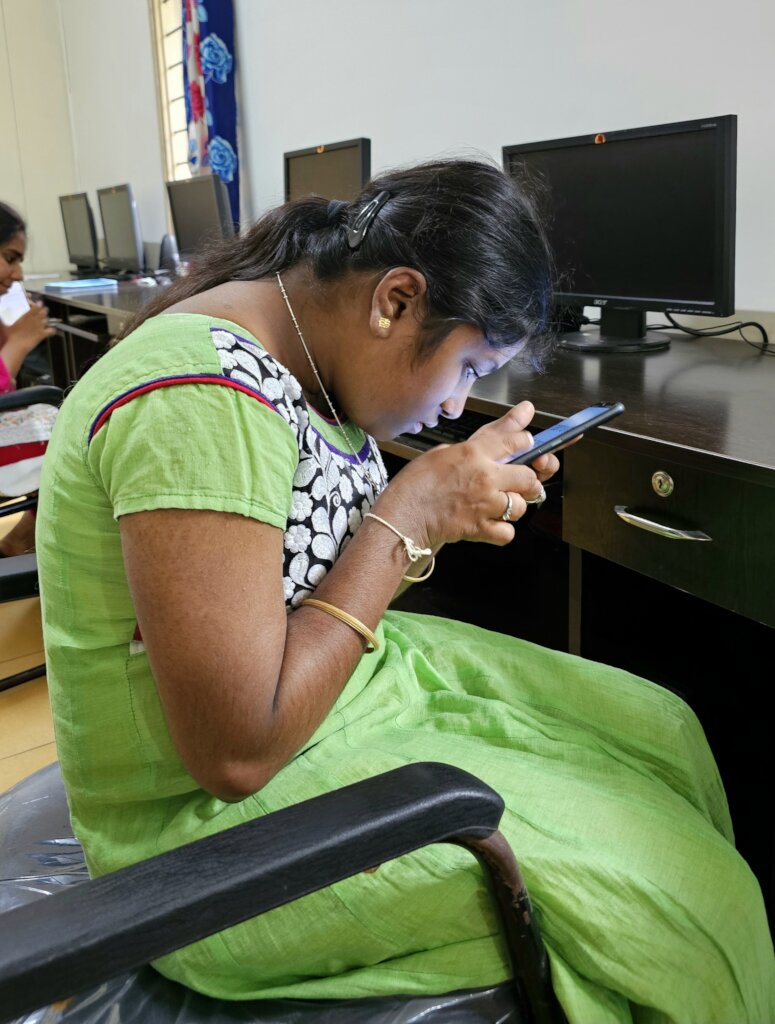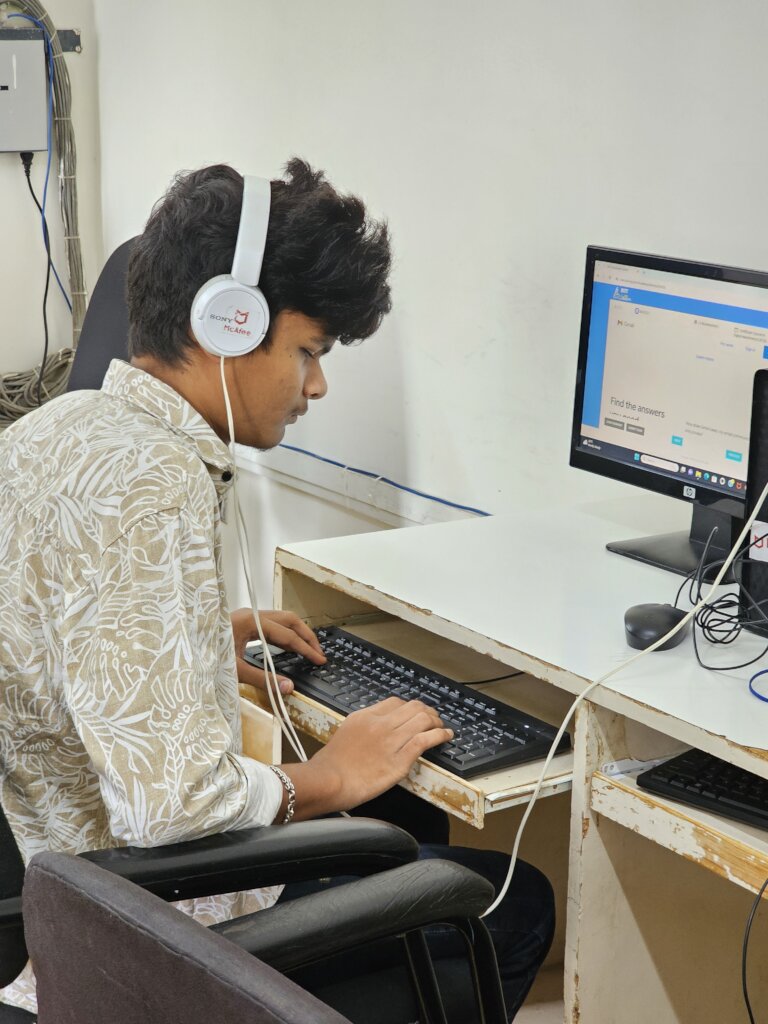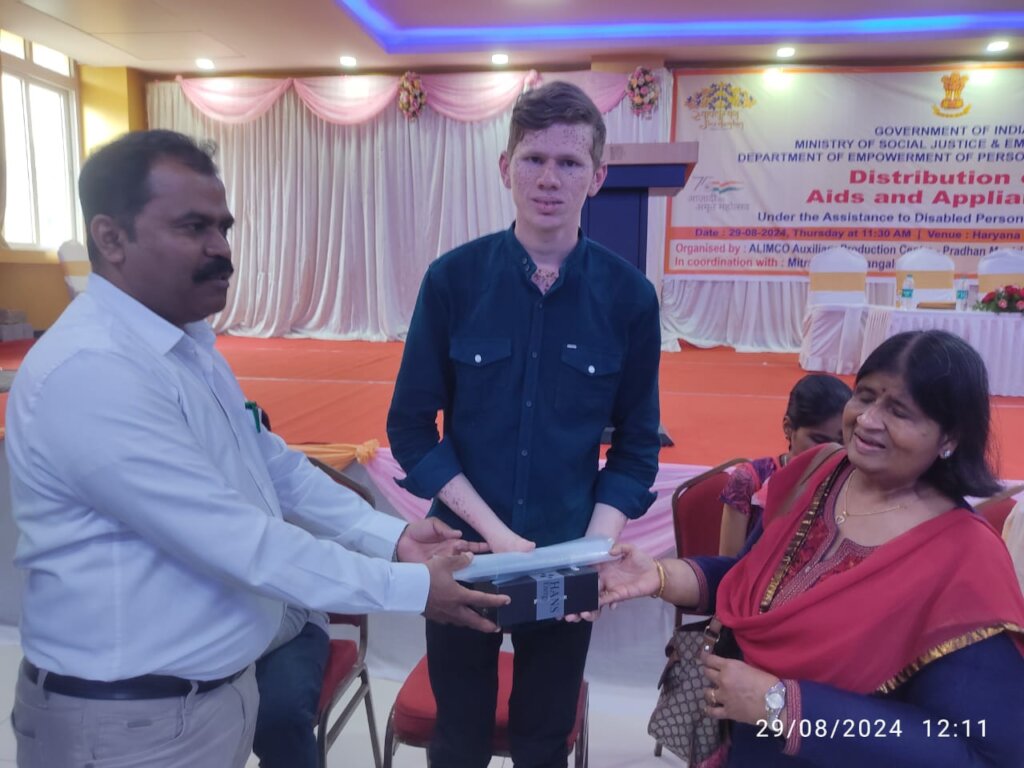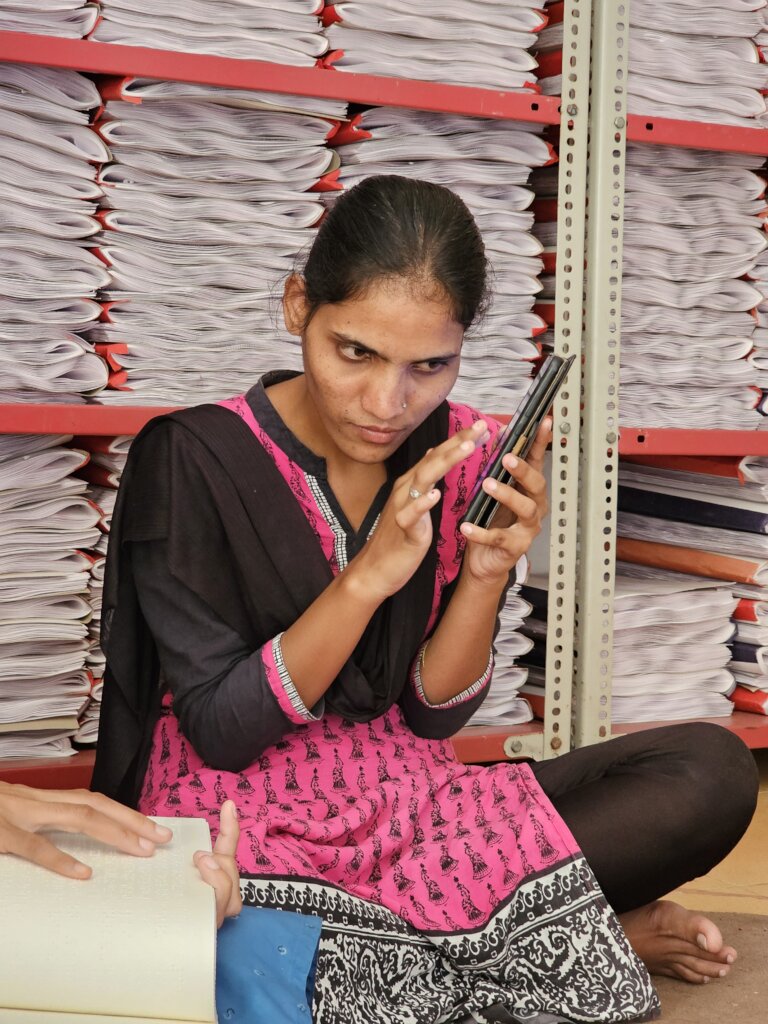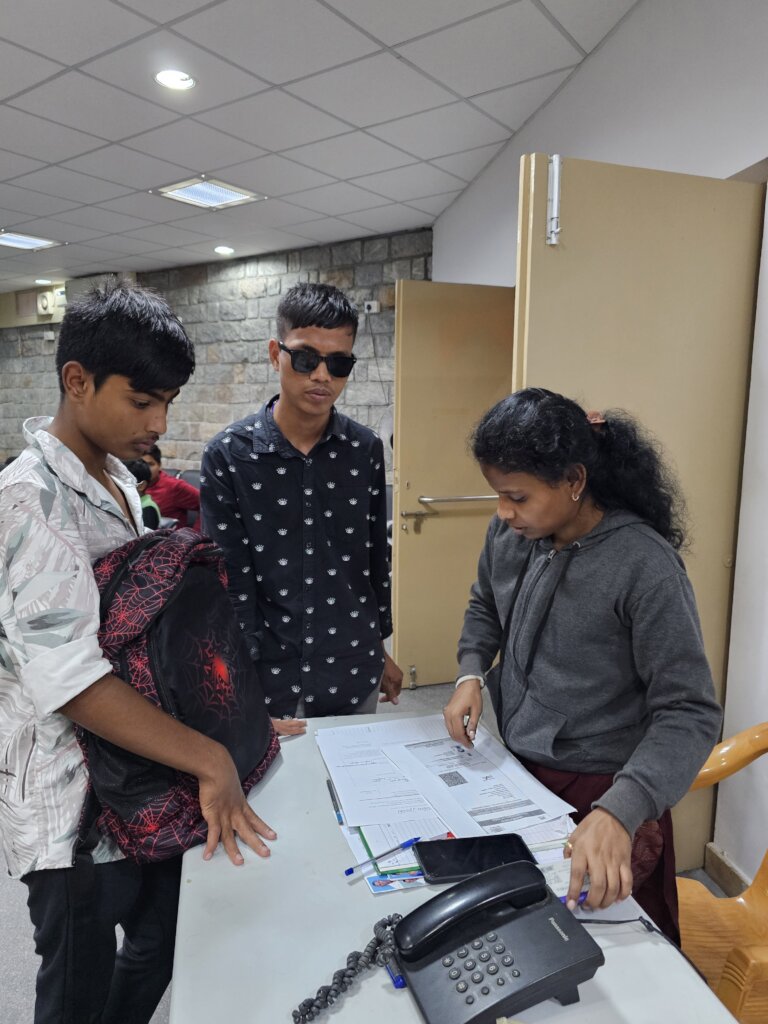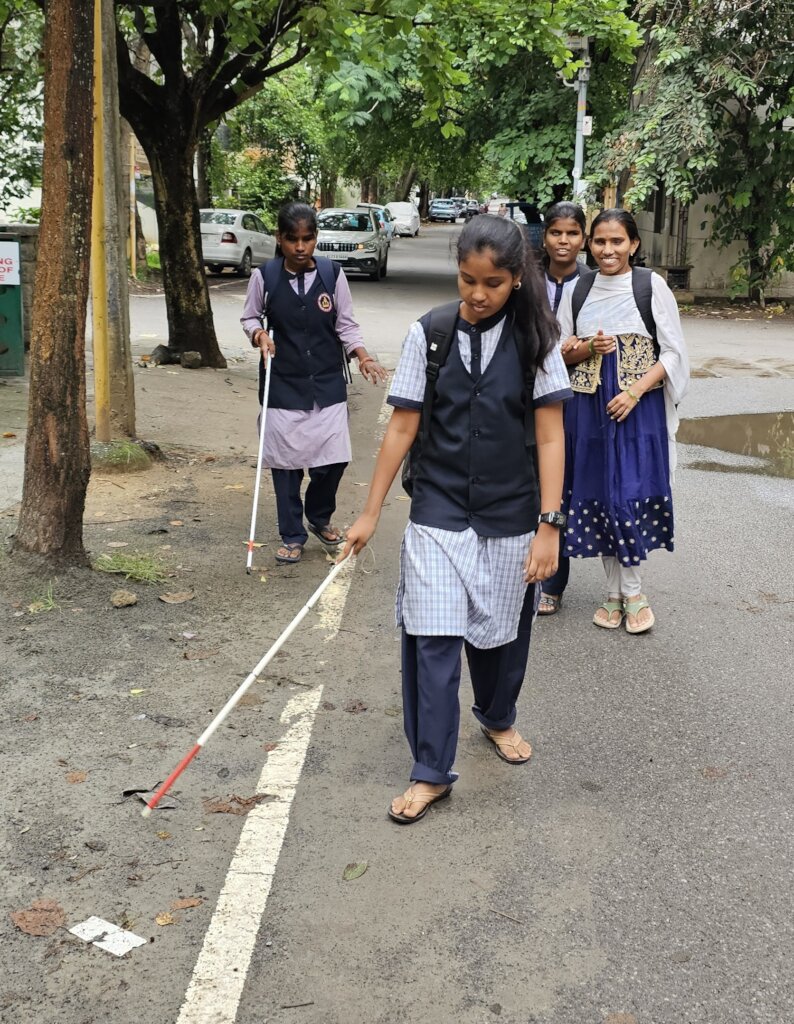By Asha Shridhar | Executive Director
Introduction
Assistive devices have become essential tools for empowering visually impaired individuals, offering them greater independence, accessibility, and opportunities in both personal and professional spheres. Devices such as smartphones, white canes, DAISY players, and laptops/computers have revolutionized the lives of visually impaired individuals, enabling them to participate actively in everyday activities, education, and the workforce.
Mitra Jyothi coordinates with Govt agencies, corporates and donors to procure these devices.
This year in collaboration with ALIMCO (Artificial Limbs Manufacturing Corporation of India) we distributed 257 smart phones and smart canes to visually impaired individuals.
We distributed 15 Daisy Players to students who are pursuing higher education in college.
This report highlights the ways in which these devices aid visually impaired individuals and foster a more inclusive environment.
1. Smartphones
Smartphones, particularly those with accessibility features such as screen readers, magnification options, and voice assistants, have transformed the way visually impaired individuals communicate and navigate the world. Applications designed specifically for accessibility, such as VoiceOver for iOS, TalkBack for Android, and third-party apps like Be My Eyes and Seeing AI, have made smartphones indispensable tools.
Personal Benefits: Smartphones allow visually impaired individuals to independently read text, recognize objects, navigate unfamiliar areas, and access audio-visual content. Features such as GPS and navigation apps provide directions and location guidance, enabling them to travel with confidence.
Professional Benefits: Smartphones facilitate access to emails, document management, communication apps, and digital calendars, ensuring visually impaired professionals can manage tasks and collaborate effectively in workplace settings.
2. White Canes
White canes are among the most recognizable and essential tools for visually impaired individuals. They are used for mobility and safe navigation, helping the user identify obstacles, stairs, and other potential hazards in their environment. They are a symbol of respect and independence for the visually impaired.
Personal Benefits: The white cane allows individuals to move safely and independently, giving them confidence to navigate public spaces, travel, and manage daily errands without reliance on others.
Professional Benefits: In professional settings, the white cane helps visually impaired individuals move freely within workplace environments, fostering a sense of autonomy and confidence that enables them to focus on their work responsibilities without worrying about mobility challenges.
3. DAISY Players
DAISY (Digital Accessible Information System) players are devices specifically designed for individuals with print disabilities, enabling them to listen to audiobooks, documents, and other audio content. DAISY players provide an accessible reading format, making it easier for visually impaired users to study, work, and enjoy literature.
Personal Benefits: DAISY players allow users to listen to a wide variety of books, newspapers, and magazines in audio format, enriching their educational and personal lives. The structured audio format also enables easy navigation within texts, allowing users to jump between pages or chapters effortlessly, book mark and highlight important text.
Professional Benefits: For students and professionals, DAISY players are invaluable for reading academic materials, professional journals, and other documents necessary for education or career advancement, helping visually impaired individuals keep up with information-intensive professions and courses.
4. Laptops and Computers
Laptops and computers, equipped with screen readers and other accessibility software, are essential for visually impaired individuals in both educational and professional settings. Programs like JAWS (Job Access with Speech), NVDA (NonVisual Desktop Access), and built-in screen readers (e.g., VoiceOver on Mac) enable users to access and interact with digital content.
Personal Benefits: Laptops and computers provide visually impaired users with access to a wide array of resources, including online courses, social media, news, and entertainment, enhancing both social engagement and personal development. They also enable access to government services and online banking, improving self-reliance in daily life.
Professional Benefits: In the workplace, laptops and computers allow visually impaired individuals to perform tasks like document creation, data analysis, presentations, and research, thus opening doors to a wider range of job opportunities. Access to professional software and communication platforms also enhances their productivity and enables effective collaboration with colleagues.
Conclusion
Assistive devices such as smartphones, white canes, DAISY players, and laptops/computers play a crucial role in bridging the accessibility gap for visually impaired individuals. By enabling personal independence, enhancing educational pursuits, and supporting professional engagement, these tools have a profound impact on the quality of life of visually impaired people. With continued advancements in assistive technology and increasing accessibility awareness, these devices will continue to empower visually impaired individuals, fostering a more inclusive society where everyone can participate equally and fully in all aspects of life.
Links:
Project reports on GlobalGiving are posted directly to globalgiving.org by Project Leaders as they are completed, generally every 3-4 months. To protect the integrity of these documents, GlobalGiving does not alter them; therefore you may find some language or formatting issues.
If you donate to this project or have donated to this project, you can receive an email when this project posts a report. You can also subscribe for reports without donating.
Support this important cause by creating a personalized fundraising page.
Start a Fundraiser